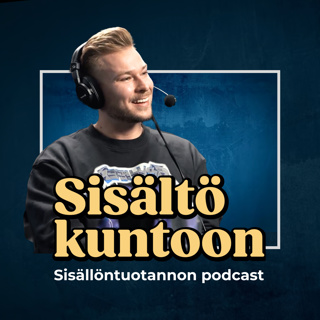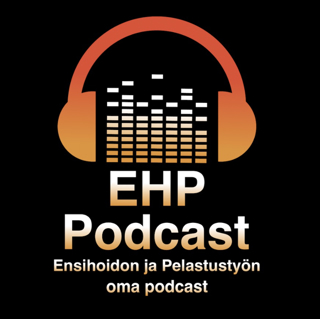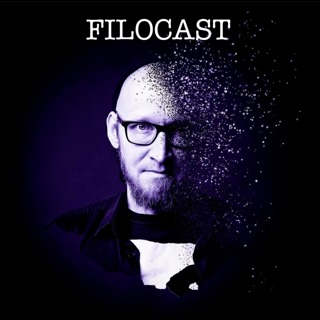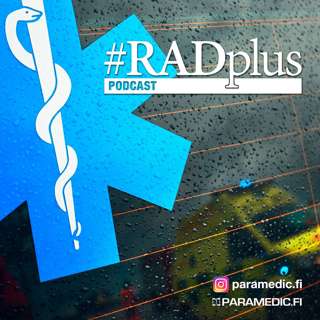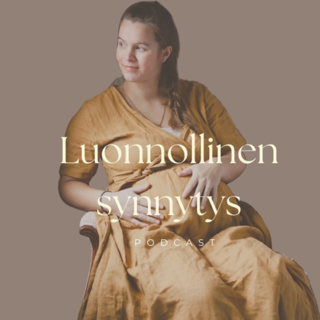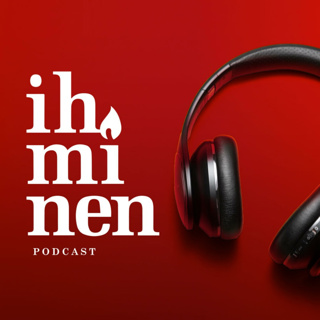
Ep. 338 Surgical Options for Lymphedema with Dr. Kuldeep Singh
In this episode, host Dr. Aparna Baheti interviews Dr. Kuldeep Singh who breaks down the three stages of lymphedema, their respective medical and surgical treatment options, all while sharing key insights he has developed through years of experience in treating and caring for patients with lymphedema at a high level throughout the episode. --- CHECK OUT OUR SPONSORS Medtronic HawkOne Directional Atherectomy System https://www.medtronic.com/hawkone Philips SymphonySuite https://www.philips.com/symphonysuite --- SHOW NOTES Dr. Kuldeep is a Vascular Surgeon, the Director of Limb Salvage Surgery, and Program Director at Zucker School of Medicine at North Wall Hospital in Staten Island. He begins by recounting the first time he was approached by a patient suffering from Stage 3 lower extremity lymphedema, along with his initial thought process/treatment plan for the patient. He then goes on to speak on several similarities/challenges he has encountered through treating a number of patients with lymphedema, including managing/treating psychological body dysmorphia in most patients after successful surgical treatment of lymphedema. Kuldeep underscores the gravity and risks associated with moving forward with the Charles procedure (which is also known as lymphedema debulking operation), how such a surgical option should only be considered for patients with Stage 3 lymphedema, and how to encourage and promote consistent pre-operative care. Kuldeep goes onto discuss the operation itself in detail - explaining how the surgery is best done as a team (Vascular (dissecting soft tissue and placing Wound VAC for 1 week to promote formation of granulation tissue), Plastics (skin grafting/reconstruction after 1 week), and Pathology), working within the fascial plane (differentiating fascia, muscle, and fat), dealing with calcified fat effectively, difficulty of identifying fascia in setting of lymphedema, and working near the ankle (avoiding iatrogenic injury of anterior and posterior tibial arteries and achilles tendon). We wrap up the episode by discussing postoperative course: admitting the patient into Burn ICU after each step of the procedure, reapplying Wound VAC after Vascular and Plastic portions, and only discharging the patient from Burn ICU to a rehab facility after evidence of good graft uptake. --- RESOURCES Limb Salvage for “Hopeless” Lymphedema: Reviving the Charles Procedure by Singh et al. DOI: https://doi.org/10.1016/j.jvs.2019.01.021
30 Kesä 202343min

Ep. 337 Management of Vulvar Varices with Dr. Brooke Spencer
In this episode, host Dr. Ally Baheti interviews interventional radiologist Dr. Brooke Spencer about management of pelvic venous disease, endovascular therapies for pelvic varices, and important considerations for treating patients with complex and chronic pain. --- CHECK OUT OUR SPONSOR Boston Scientific Drug Elution https://www.bostonscientific.com/en-US/medical-specialties/vascular-surgery/drug-eluting-therapies.html?utm_source=oth_site&utm_medium=native&utm_campaign=pi-at-us-de_portfolio-hci&utm_content=n-backtable-n-backtable_site_portfolio_1_2023&cid=n10012334 --- SHOW NOTES Dr. Spencer serves as the CEO and medical director of Minimally Invasive Procedure Specialists in Denver, CO. Her patients commonly get referred from OB/GYNs for chronic pelvic pain that is refractory to laparoscopic surgery and undiagnosed. She notes that collaborative relationships with women's health specialists and pelvic pain physical therapists are necessary for adequate patient outreach. Classifying cases by the location and nature of the vessel abnormality (i.e. compressive, obstructive, varicose, reflux, congenital) allows her to think about the best treatment for each patient. Targeting proximal veins can improve back and groin pain, dyspareunia, and heavy periods. Iliac vein stenting can improve compressive symptoms 50% of the time. On the other hand, isolated labial pain is best treated by directly targeting labial varices. Perineal ultrasound is a helpful way to locate some varicosities, but Dr. Spencer prefers MRI and digital subtraction venography to get a comprehensive venous picture and correlate symptoms with imaging. Next, the doctors discuss embolization and foam sclerotherapy. Through her experience, Dr. Spencer has seen sclerotherapy work better in varices with slower outflow and coil embolization work better for varices with more rapid flow. She prefers oversized floppy coils to minimize the risk of migration. With both treatments, there can be significant insurance barriers. It is important to utilize preauthorization specialists and be aware of what the patient’s insurance will cover, in order to better frame a conversation about treatment options. After the procedure, maximal pain relief can be achieved anywhere between 3 to 6 months. During this period, it is important to counsel patients over adjunct therapies such as pelvic floor therapy, steroids, and puncture aspiration to remove trapped blood. Overall, Dr. Spencer wants IRs to keep in mind that the chronic pain population has faced many misdiagnoses and insurance barriers, so they might harbor mistrust of the healthcare system. It is crucial to acknowledge their feelings and understand their anatomy in order to manage their expectations. --- RESOURCES Pelvic Guru: https://pelvicguru.com/ Efficacy of Endovascular Treatment for Pelvic Congestion Syndrome: https://pubmed.ncbi.nlm.nih.gov/27318059/ International Pelvic Pain Society: https://www.pelvicpain.org/ “The Way Out” book: https://www.amazon.com/Way-Out-Revolutionary-Scientifically-Approach/dp/059308683X
26 Kesä 202343min

Ep. 336 My Algorithm for Below the Knee CLI with Dr. Peter Soukas
In this episode, host Dr. Christopher Beck interviews Dr. Peter Soukas about his algorithm for below the knee (BTK) critical limb ischemia (CLI) interventions as well as his implementation of new evidence-based guidance. --- CHECK OUT OUR SPONSOR Medtronic HawkOne Directional Atherectomy System https://www.medtronic.com/hawkone --- SHOW NOTES Dr. Soukas serves as the director of vascular medicine, the interventional peripheral vascular lab, and the endovascular medicine fellowship at Brown University in Providence, RI. In addition, he holds the position of associate professor of medicine at The Warren Alpert Medical School at Brown University. Dr. Soukas began his career as an interventional cardiologist. Over the course of his 13-year tenure in Providence, he has dedicated his career to the treatment of CLI and BTK disease. Prior to any interventional work, Dr. Soukas follows a comprehensive work-up including an ankle-brachial index (ABI), arterial duplex, and evaluating kidney function for safe administration of contrast. For a majority of cases, he uses the common femoral artery as the access point, but prefers to prep multiple access sites in the event of needing both anterograde and retrograde, or pedal, access. He discusses the use of the chronic total occlusion crossing approach based on plaque cap morphology (CTOP) classification on angiogram in determining the need for a retrograde approach. The type I morphology is characterized by the convexity of the plaque pointing away and is often treated successfully by an anterograde approach alone, as CTOP types II, III, and IV benefited from the addition of retrograde tibiopedal access. Once access is gained and the plaque morphology is evaluated using angiography, it becomes crucial to address any issues with the inflow to the affected vessel. This step ensures proper blood flow and provides a stable foundation for further interventions. Intravascular ultrasound is then used to assess the size and extent of the plaque, and then depending on the amount of calcification, either intravascular lithotripsy or calcium modifying technology can be used. Scoring balloons with low pressure may also be used for vessels that are moderately calcified and have been shown to have low rates of recoil and dissection. The main initiative of the procedure is to provide blood flow to the target angiosome which is dependent on the location of the wound. During his last remarks, Dr. Soukas comments on the future of BTK interventions, including Paclitaxel vs Sirolimus eluting stents, the use of self-expanding stents, and LimFlow, a minimally invasive technology that creates a channel between an artery and vein allowing the vein to provide blood flow to the foot. With the increasing prevalence of critical limb-threatening ischemia (CLTI) and high 12-month mortality rates in patients with amputations, Dr. Soukas ends the discussion by emphasizing how revascularization should be the preferred initial approach in treating CLTI due to the potential benefits it offers in terms of limb preservation and mortality reduction, urging practitioners to educate patients in being aggressive in their care. --- RESOURCES CTOP article: https://evtoday.com/articles/2018-may/using-plaque-cap-morphology-to-determine-cto-crossing-approach Disrupt PAD III Observational study: https://pubmed.ncbi.nlm.nih.gov/34380334/ PRELUDE BTK Study: https://pubmed.ncbi.nlm.nih.gov/34802313/ Intravascular Ultrasound study: https://www.jacc.org/doi/10.1016/j.jcin.2022.01.001 Intravascular US in Medicare Beneficiaries: https://pubmed.ncbi.nlm.nih.gov/35998803/ PROMISE II study: https://limflow.com/us/clinical-evidence/promise-ii-study-results/
23 Kesä 20231h 2min

Ep. 335 Transcranial Focused Ultrasound: Next Generation Imagine-Guided Therapy of the Brain with Dr. Bhavya Shah
In this episode, host Dr. Jacob Fleming interviews one of his attendings Dr. Bhavya Shah about the remarkable features of focused ultrasound technology and its applications. They discuss its dynamic nature, allowing for a wide range of applications. --- SHOW NOTES Dr. Bhavya Shah is a neuroradiologist at UT Southwestern in Dallas, TX and the director of their transcranial-focused ultrasound lab. While in residency at Boston MIT, he studied the radiology applications for nerve regeneration and expanded his scope of practice during his fellowship at Stanford. Dr. Bhavya Shah explains the use of low intensity focused ultrasound (LIFU) and high intensity focused ultrasound (HIFU), particularly in the context of movement disorders including essential tremor and Parkinson’s disease. LIFU is used to identify the appropriate targets in the brain in relation to the disease and may be used to alter how neurons behave. In contrast, high intensity focused ultrasound (HIFU) is utilized to ablate and destroy tissues typically after the localization of the intended treatment area. Dr. Shah developed a way to identify targets in the brain for treatment with focused ultrasound with the use of four-tract tractography in cadavers. Using this technology, the brain can be thinly sliced into sections which could then be registered off an MRI back to the path using block face photography, allowing the identification of white matter tracts that enter and leave the thalamus. With these tracts identified, neuroradiologists can first stimulate the localized area with LIFU to confirm the location, then ablate using HIFU. The procedure lasts approximately 30-45 minutes as the patient remains awake. Remarkably, patients with essential tremor usually experience benefit immediately following the procedure as patients with Parkinson’s have symptom improvement within days to weeks. After two hours of observation, patients are discharged assuming no side effects. Side effects are uncommon but can include numbness and tingling around the mouth or fingertips as well as muscle weakness. Beyond its use for movement disorders, the adaptable nature of focused ultrasound technology shows promise for a broad range of applications, particularly for the use of neuropsychiatric conditions. Dr. Shah offers the potential for the use of HIFU as a wearable device that delivers constant stimulation modulated by biofeedback, potentially eliminating the need for MRI for the procedure. Dr. Shah and Dr. Fleming end the discussion with how radiology has evolved over the years and the importance of keeping an open mind working in a multidisciplinary team. They emphasize the gravity of patient engagement and the central goal of medicine and improving the standard of care should always be aimed at benefiting the patient. --- RESOURCES MRI–Guided Focused Ultrasound Thalamotomy for Essential Tremor: https://thejns.org/view/journals/j-neurosurg/138/4/article-p1028.xml Trial of Globus Pallidus Focused Ultrasound Ablation in Parkinson’s Disease: https://www.nejm.org/doi/10.1056/NEJMoa2202721 Long-term effects of bilateral subthalamic nucleus deep brain stimulation on gait disorders in Parkinson's disease: a clinical-instrumental study https://pubmed.ncbi.nlm.nih.gov/37208527/ Magnetic Resonance Image Guided Focused Ultrasound Thalamotomy. A Single Center Experience With 160 Procedures: https://www.ncbi.nlm.nih.gov/pmc/articles/PMC8894664/
21 Kesä 202346min

Ep. 334 New Balloon Technologies for CLI with Dr. Peter Soukas
In this episode, host Dr. Aaron Fritts interviews Dr. Peter Soukas taking a deep dive into novel balloon technologies, appropriate uses below the knee, and how these new balloons are highly effective in treating patients with critical limb ischemia (CLI). Dr. Soukas explains how these new balloon technologies can minimize the risk of dissections (therefore decreasing the need for bailout stents), create effective lumen gain in concentric and eccentric calcified lesions with minimal recoil, and keep pressures low compared to legacy products. --- CHECK OUT OUR SPONSOR Cagent Vascular Serranator https://www.cagentvascular.com --- SHOW NOTES Dr. Soukas is an Interventional Cardiologist who is the Founder and Director of the Brown Vascular and Endovascular Medicine Fellowship program, serves as the Director of the Interventional PV Lab at the Lifespan Cardiovascular Institute of Brown, and an Associate Professor of Medicine at the Warren Alpert School of Medicine. We begin by discussing the treatment of CLI, particularly with new below the knee balloon angioplasty devices like the Cagent Serranator and how balloon tech has evolved over time. These new technologies allow for 1000x more force than previous balloon models through unique serration technology at significantly lesser pressures, minimizing the risk of barotrauma and iatrogenic lumen dissections, while allowing for effective luminal gain, and showing success in treating CLI even when calcified lesions are present. What’s more is that there is now a variety of serration balloon lengths available, which was definitely a huge shortcoming in prior scoring balloons with limited sizing. While IVL is the preferred option in terms of treating concentric (360°) calcified lesions, new serration balloons are cheaper and show success in treating both concentric and eccentric calcified lesions with minimal recoil. Dr. Soukas and Dr. Fritts also go on to discuss how using IVUS is critical in visualizing the size, shape, and depth of possible calcifications but also important in picking the correctly sized serration-balloon to get the job done. Dr. Soukas also explains how the serration balloon technology is easily deployable, tracks very well within vasculature, and can even be used below the ankle if needed (with some pre-dilation of the lumen) stating that if the IVUS can fit, usually so can the serration balloon. To wrap up the episode we underscore how important it is to have the right tools in our toolbox to treat patients with CLI, getting as much “red gold” down to the foot as possible to avoid loss of the limb, and a few papers our listeners can check out to learn more about serration balloons (find linked in Resources below). --- RESOURCES CagentVascular.com Prospective Study of Serration Angioplasty in the Infrapopliteal Arteries Using the Serranator Device: PRELUDE BTK Study DOI: 10.1177/15266028211059917 Standard Balloon Angioplasty Versus Serranator Serration Balloon Angioplasty for the Treatment of Below-the-Knee Artery Occlusive Disease: A Single-Center Subanalysis From the PRELUDE-BTK Prospective Study DOI: 10.1177/15266028221134891 PRELUDE Prospective Study of the Serranator Device in the Treatment of Atherosclerotic Lesions in the Superficial Femoral and Popliteal Arteries DOI: 10.1177/1526602818820787
19 Kesä 202322min

Ep. 333 Empowering Patients Through Image Sharing: The PocketHealth Story with Rishi Nayyar
In this episode, host Dr. Bryan Hartley interviews Rishi Nayyar, co-founder and CEO of PocketHealth, the first patient-centered medical image exchange platform. --- CHECK OUT OUR SPONSOR RADPAD® Radiation Protection https://www.radpad.com/ --- SHOW NOTES PocketHealth is a subscription-based image sharing service that allows patients to store, access, and share their medical imaging with providers across different health systems. Rishi and his brother Harsh developed the idea for this service after realizing how antiquated and frustrating it was for patients to physically carry their CDs to different physician offices. Additionally, with the sheer volume of medical images ordered today and the cost of data storage, hospitals usually delete images after a certain period of time. First, the Nayyar brothers conducted their own market research by calling hundreds of local hospitals and clinics and asking them about their image exchange process. This process confirmed that the status quo of image exchange was a burdensome process for patients and inspired them to configure a patient-centered service. The second stage of their entrepreneurial pursuit was to figure out how the service would be paid for. The founders realized that patients were willing to pay a small subscription fee (instead of paying for CDs) to safely indefinitely store and virtually send their own and their family members’ images to healthcare providers using a link or QR code. Overtime, insurance companies have become willing to reimburse this subscription fee. This payment model allows hospitals and clinics to participate in image exchange at no cost, and has been a key factor in encouraging widespread adoption as well as enabling the growth of their enterprise image sharing business. Rishi highlights the fact that he had the advantage of being an outsider to healthcare when he first started the company, which helped him recognize issues with the current system instead of just accepting the standard processes. He shared the same perspectives as patients who were interacting with the system as non-health experts. PocketHealth’s success in the last eight years has propelled it to take on new challenges, such as patient education within radiology reports. Finally, Rishi gives advice to budding entrepreneurs. He encourages them to pick a problem that they don’t mind grinding at, since there is a large initial time and effort requirement needed to convince people to adopt their product. Additionally, the innovation journey is long, so to manage one’s psyche, it is wise to set short term achievable benchmarks and reflect on day-to-day progress. --- RESOURCES PocketHealth: https://www.pockethealth.com/
16 Kesä 202357min

Ep. 332 El Futuro de MSK: Embolizaciones Musculoesqueletas con Dr. Ana Fernandez Martinez
En este episodio de BackTable, las Dras. Gina Landinez y Ana María Fernández Martínez hablan sobre el intervencionismo musculoesquelético y las técnicas para la embolización del hombre rígido. --- SHOW NOTES La Dra. Fernández Martínez explica su trayectoria en el campo de intervencionismo musculoesquelético y la oportunidad de entrenarse en Japón. Luego entra en detalles técnicos, describiendo cómo obtiene acceso usando su microcatéter para entrar a las articulaciones que quiere tratar. Explica que estas arterias son de un calibre muy pequeño, así que necesita herramientas diferentes para los procedimientos esqueléticos. También, ella describe el efecto que tiene la embolización en las fibras nerviosas y la inflamación para restaurar la vascular normal. Adicionalmente, las doctoras explican quienes son los pacientes ideales para la embolización de un hombro rígido. Dra. Fernández Martínez distingue síntomas de un hombro rígido, como la limitación de la vida diaria y la movilidad, y hace la distinción entre esta patología y la artritis. Habla también del tiempo ideal para la embolización para optimizar los resultados y la importancia de la rehabilitación con la fisioterapia. Próximo, la doctora explica los beneficios inmediatos y a largo plazo que ve en sus pacientes. Usualmente, se pueden ver los efectos de la embolización tres meses después del procedimiento si el paciente participa en la fisioterapia, y el máximo beneficio ocurre a los seis meses. Repetición del procedimiento es posible también. Finalmente, las doctoras hablan sobre las complicaciones de la embolización, que incluyen un hematoma en la zona de punción. Dra. Fernandez Martinez termina el episodio alentando a sus colegas radiólogos intervencionistas a explorar la embolización musculoesquelética.
14 Kesä 202346min

Ep. 331 EVUS to IVUS: a Continuous Spectrum with Dr. Jill Sommerset and Dr. Fadi Saab
In this episode, host Dr. Ally Baheti interviews Jill Sommerset and Dr. Fadi Saab about EVUS and IVUS in peripheral arterial cases, including when to use each, how to train an interventional sonographer, and what adding ultrasound in a case can do for patient safety. --- CHECK OUT OUR SPONSORS Philips Image Guided Therapy Devices Academy https://resource.philipseliiteacademy.com Philips SymphonySuite https://www.philips.com/symphonysuite --- SHOW NOTES Jill Sommerset is the director of ultrasound at Advanced Vascular in Portland, OR and Hope Clinical Innovation Center in Houston, TX, and chair of the SVU annual conference. Dr. Fadi Saab is an interventional cardiologist and associate professor at Michigan State University. He begins by introducing what intravascular ultrasound (IVUS) and extravascular ultrasound (EVUS) are. EVUS is looking from the outside in, and can be used to measure vessel width, hemodynamics, and cross chronic total occlusions (CTOs). IVUS is looking from inside a vessel towards the outside of the body, and can be helpful for viewing the extent of arterial disease and discerning the exact plaque anatomy. Dr. Saab always has a specially trained interventional sonographer involved in the case and in the room for critical limb ischemia (CLI) cases. He values them not only for obtaining access, but also to provide greater safety to the patient. He considers them a core member of the team. He notes the importance of training an ultrasonographer who is good when working under pressure, can interact with multiple personality types, and most importantly, someone willing to learn, be engaged in the case, and willing to put themselves out there in this foreign environment. Jill says it took her around 4 months to feel comfortable working in the cath lab, and for other members of the team to get used to her presence during cases. She describes her work as a dance with the physician. When a wire or catheter is being exchanged, Jill is always scanning and thinking ahead, and she is always ready to check for dissections after balloon angioplasty. Most arterial cases can benefit from the addition of EVUS. Jill says the only time EVUS is not as helpful is when the CTO cap morphology shows a rock hard plaque that casts shadows on the screen. Dr. Saab says he uses EVUS for crossing CTOs, patient safety, and looking at complications. He usually introduces IVUS after he crosses a lesion to look at plaque in a more granular way and understand it’s anatomy. Jill adds that she uses IVUS to help the physician cross a CTO sometimes, but notes that it is important for the tech to hold the probe still and not move in this scenario. The two end by restating the value that EVUS and IVUS add to the procedure, especially because angiography misses a lot of plaque burden that can be seen with IVUS. They recommend finding ultrasonographers interested in working in the cath lab, and taking the responsibility as physicians to mentor them and make them feel like an invaluable member of the treatment team. --- RESOURCES CTOP Paper: https://assets.bmctoday.net/evtoday/pdfs/et0518_F5_Saab.pdf
12 Kesä 202355min








